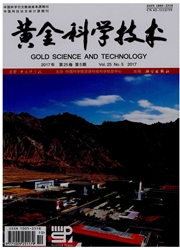

 中文摘要:
中文摘要:
为确保隧道施工安全,建立了改进未确知测度理论,并应用置信度识别准则来确定隧道塌方风险等级。风险评估步骤如下:首先,选取围岩等级、隧道埋深、地下水、偏压角度和不良地质因素作为静态孕险指标,大气降水、开挖跨度、支护措施和监控测量作为动态致险指标;其次,采用物元分析代替熵权分析来确定静态和动态组合权重;最后提出风险规避方法,从而有效降低风险等级。将改进未确知测度理论风险评价方法成功应用于关口垭部分隧道风险评价中,既能准确判断风险等级,又能有效控制风险因素,为隧道风险评价提供了新方向。
 英文摘要:
英文摘要:
To ensure the safety of constructing tunnels, an improved unascertained measured model was built,using the confidence criterion,to ensure the risk level of tunnel collapse.The steps of risk assessment includethree steps.Firstly, selected rock level, depth,ground water conditions,bias angle and unfavorable geology asstatic indexes,meteoric water,excavation span,support measure and monitor measure as dynamic indexes.Secondly, the matter-element analysis method replacing the entropy weight analysis was used to determine thecombination weights of static indexes and dynamic indexes.Finally, a risk aversion method was proposed, which isto lower the risk grade.The presented approach had been applied successfully in evaluating the construction riskof part of Guankouya tunnel.The model not only judged risk grades exactly,but also controlled risk factorseffectively.This method offered new directions for assessment and risk control of tunnel collapse.
 同期刊论文项目
同期刊论文项目
 同项目期刊论文
同项目期刊论文
 期刊信息
期刊信息
